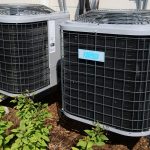
7 Essential Tips for Choosing the Perfect Staircase Builder: A Guide to Elevating Your Home’s Design
August 21, 2024Navigating The Blocked Stormwater Drain Cleaning Maze: Your Essential Guide
October 24, 2024Installation and Maintenance
Have you ever wondered about the best way to keep your home comfortably cool during scorching summer months and cozily warm in the frosty winter? Have you thought about what type of air conditioning system would work best for your house’s design and layout? Perhaps you have heard about split systems but not entirely sure what they are, how they’re installed, or how they’re maintained? In this blog post, we’re going to demystify split systems, introducing you to their world in a comprehensive guide that spans installation and maintenance. Buckle up as we delve into the nitty-gritty of this efficient and versatile climate regulator.
As a homeowner, you might have encountered daunting challenges when it comes to making a choice on the best heating and cooling system to install. The array of options available can leave you confused, but don’t worry – you are not alone. That’s why we’re simplifying one of those options for you today – the split system.
To put it in a nutshell, a split system is a type of air conditioning system that’s split into two parts: an outdoor unit and an indoor unit. The system is an economical and practical solution to your home climate needs. By the end of this piece, you will be well-versed on the ins and outs of split system air conditioners, enabling you to make an informed decision whether this is the right fit for your home needs.
Why Choose a Split System?
Familiar with the saying that good things come in small packages? This couldn’t be truer in the case of split systems. Small but mighty, these systems are known for their high energy efficiency and quiet operation. But that’s not all there is to it.
Split systems are celebrated for their flexibility, allowing for a tailored temperature control experience in different rooms. You can install the indoor units in specific spaces, directing the airflow where it’s needed most. So why freeze in the kitchen while the living room is toasty warm?
Additionally, split systems are cost-effective and essential for homes without ductwork. Unlike traditional HVAC systems, installing a split system does not require any major construction in your home. All you need is a three-inch hole in your wall for pipes connecting the indoor and outdoor units.
What to Consider before Installation
Before you fall in love with the split system and get one for your home, there are several factors you should keep in mind. These will determine whether a split system is right for your home.
First and foremost, you should consider the size of your home and the rooms you want to condition. The powerful nature of a split system doesn’t necessarily mean it’s suitable for large homes.
Secondly, consider the kind of insulation you have – inadequate insulation could lead to energy losses. An important thing to note is the location and layout of your home – optimal positioning of the indoor and outdoor units will boost efficiency.
Finally, your budget will determine the type/brand of split system you can afford. While a split system’s installation might not cost much, remember that you need to factor in running and maintenance costs.
Installation Process and Maintenance Tips
After settling on a split system, it’s time to install it! You can do so with the help of a licensed professional technician who is knowledgeable about electrical wiring and refrigeration.
Maintenance is a critical factor in extending the lifespan of your split system. To keep dust and grime at bay, regularly clean the air filters – this will also improve your home’s air quality. Most importantly, schedule professional maintenance services at least once a year for a thorough system check.
Split Systems: Pros and Cons
Like any other type of air conditioning, split systems have their advantages and disadvantages. For pros, noise reduction, efficiency, and flexibility top the list. However, the significant con lies in the system’s limitation to heat or cool larger homes efficiently, something central travel systems excel at.
When Split Systems are the best choice
Split systems are perfect for you if you live in a small house or an apartment. They make climate control a breeze in homes where duct installation is impractical or overly expensive. Also, if you are after an air conditioner that can double up as a heating solution, a split system is your go-to option.
Split System: An Investment Worth It?
As you ponder over this, remember, a split system can save you money in the long run through lower energy costs. While the upfront installation costs can seem high, the low running costs make it a worthy investment.
In conclusion, split systems are cost-effective, efficient, and flexible solutions for your heating and cooling needs. With this guide, you’re now well equipped to make a decision based on your specific home circumstances. Installation and maintenance, done professionally, will ensure your system serves you efficiently for many years. Remember, knowledge is power and you now have the power to decide wisely! Happy heating and cooling!









